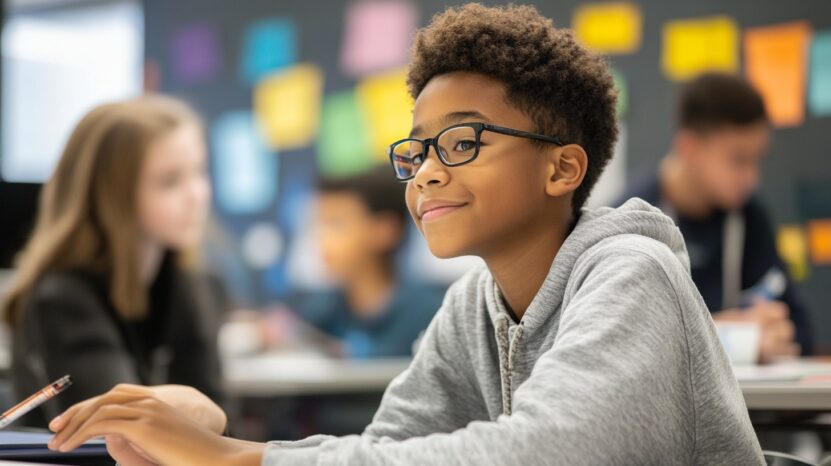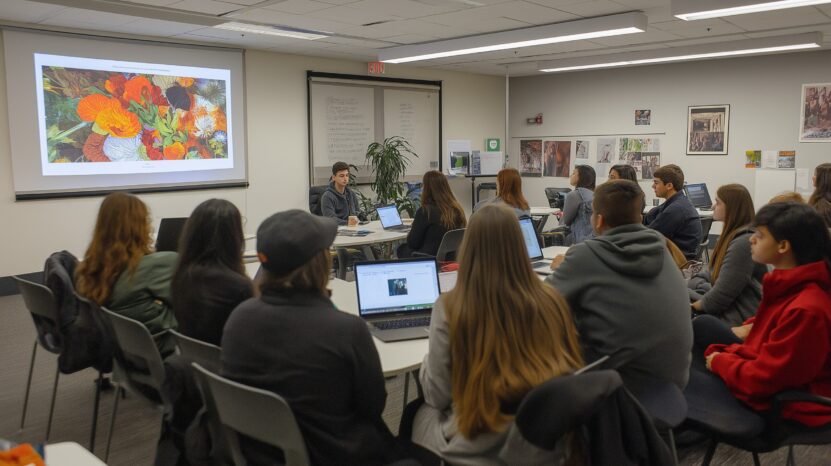
Share Post:
Game-based learning refers to the integration of game mechanics into educational activities to enhance student engagement and improve learning outcomes.
The method transforms traditional learning experiences by adding elements like challenges, rewards, and competition, which are typically found in video games. In today’s fast-paced, technology-driven world, capturing and maintaining student attention has become increasingly challenging.
Game-based learning offers a dynamic way to address this issue, making education both engaging and effective.
- Student participation
- Retention
- Success
Let us talk about it.
The Importance of Student Engagement in Education
In this new age, traditional teaching methods, such as lectures and textbook-based learning, are increasingly unable to capture and sustain students’ interest.
Today’s students, many of whom have grown up immersed in a digital world, expect learning experiences that reflect the fast-paced, interactive nature of the technologies they regularly engage with.
Consequently, engagement has become a critical factor in effective teaching, as it directly influences student success and outcomes.
Why Engagement Matters
Engaged students are more likely to actively participate in the process, leading to several key benefits:
When students are engaged, they are more likely to pay attention and actively interact with the material, which helps them absorb and retain complex information more effectively.
Active engagement stimulates the brain, encouraging the development of higher-order thinking skills, including critical thinking, analysis, and synthesis of information.
When students participate in their learning, they practice problem-solving in a real-world context. This is especially true in methods like game-based learning, where they are required to apply their knowledge in dynamic and interactive scenarios.
Engaged students are generally more motivated to continue. The more interested they are in the material, the more likely they are to put in the effort to understand it thoroughly.
Challenges in Traditional Teaching Methods
Traditional methods like lectures and reading assignments offer limited opportunities for interaction.
Modern students are used to digital environments that are:
- Immersive
- Engaging
- Interactive
In contrast, conventional teaching practices may feel outdated or boring, making it harder to maintain attention and interest.
Passive learning often results in poor retention. When they are not actively engaged, they are more likely to forget the material shortly after the lesson is over.
The Role of Engagement in Learning Outcomes
Engagement is not just about keeping students entertained—it is about fostering a deeper connection to the material that enhances long-term success. When students are fully engaged, they:
Students are more likely to ask questions, participate in discussions, and collaborate with peers, all of which deepen their understanding of the subject matter.
Research consistently shows that engaged students perform better academically. They tend to achieve higher grades, exhibit better problem-solving skills, and develop stronger critical thinking skills.
Engaged learners are better equipped to grasp and retain complex or abstract concepts because they are interacting with the material on a deeper, more meaningful level.
The Need for Innovation in Teaching
Given these challenges, it is clear that traditional teaching methods alone are not sufficient for fostering the level of engagement needed for optimal outcomes. This highlights the need for innovative teaching strategies that cater to the expectations.
Game-based learning offers interactive experiences that draw students into the content, making learning more engaging and enjoyable.
Students don’t just passively receive information. Instead, they become active participants, making decisions, solving problems, and applying what they’ve learned in real-world contexts.
How Game-Based Learning Enhances Student Engagement
Game-based learning has proven to be an especially powerful tool for enhancing student engagement due to its interactive and immersive nature.
Unlike traditional teaching methods, where students are passive recipients of information, the concept transforms education into a dynamic process.
Students actively engage with the material, participating in simulated environments that closely mimic real-life situations or complex theoretical concepts.
Key Elements That Boost Engagement in Game-Based Learning
Game-based learning provides students with the opportunity to engage with the content actively rather than passively observing it. Games offer interactive elements that encourage students to take part in the process.
One of the main strengths is the ability to immerse students in a simulated world. These immersive experiences allow them to “live” the concepts they are studying, helping to build a deeper connection with the material.
For example, in history games, students can experience historical events as though they were there, making the learning process much more vivid and memorable.
Many educational games use storytelling as a method to engage students.
For example, a game teaching math concepts might use a story about a space mission where students must solve equations to help the characters navigate through space.
Story-driven learning fosters an emotional connection, increasing the likelihood that students will remain engaged with the content.
One of the most effective aspects of game-based learning is its use of challenges to promote problem-solving skills. Instead of simply memorizing facts, students are faced with real-world challenges in the game environment.
These challenges require them to apply their knowledge, make decisions, and find solutions. This active problem-solving promotes deeper cognitive engagement, enhancing critical thinking and decision-making abilities.
Benefits of Game-Based Learning on Success
The benefits of game-based learning are more than just a mere engagement.
- Improved retention and recall
- Development of essential critical skills
- Instant feedback and continuous improvement
Improved Retention and Recall
Game-based learning enhances retention and recall by creating engaging and immersive experiences that connect emotionally with students.
Traditional learning methods often rely on memorization, but game-based learning allows students to experience the material more dynamically and memorably.
When students interact with content through gameplay, they form practical and emotional connections, which makes it easier to remember concepts in the long term.
Development of Critical Skills
Another significant benefit of game-based learning is the development of essential critical skills, such as problem-solving, creativity, and critical thinking.
Many educational games place students in complex, real-world scenarios where they must apply their knowledge and skills to solve problems or navigate challenges.
These tasks require to evaluate options, make decisions, and face the consequences of their actions, mirroring real-life situations.
Instant Feedback and Continuous Improvement
One of the most valuable aspects is the immediate feedback it offers. Unlike traditional tests or assessments, where they may have to wait days or even weeks to receive their results, games provide instant feedback.
It allows students to quickly identify their mistakes and correct them on the spot, leading to continuous improvement. The ability to self-assess in real-time encourages a growth mindset, where they view mistakes as opportunities to learn and improve rather than as failures.
This type of feedback loop is particularly effective for mastery learning, where the goal is not just to complete a task but to fully understand and master the material.
The Bottom Line
Game-based learning offers a powerful solution to increasing student engagement and improving learning outcomes.
The concept is poised to play an even more significant role in education, shaping the future of how students interact with content and acquire essential skills for life.
Related Posts:
- 9 Key Benefits of Hybrid Learning for Students and Educators
- Key Benefits of Filing the FAFSA for Students –…
- Why More Students Should Embrace Asynchronous…
- Why Social-Emotional Learning Matters in Modern Education
- What Grade Is a 13-Year-Old In? (And Why It Can Vary)
- Top 5 Innovative Learning Methods That Are…













